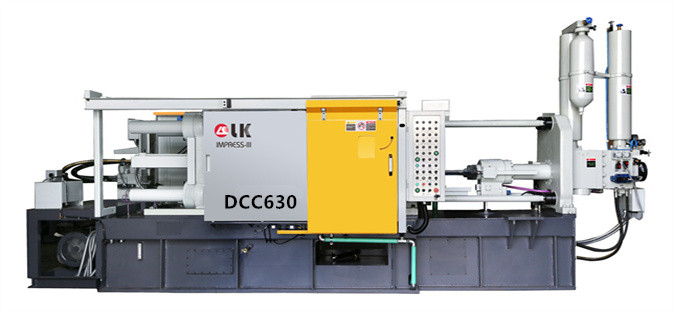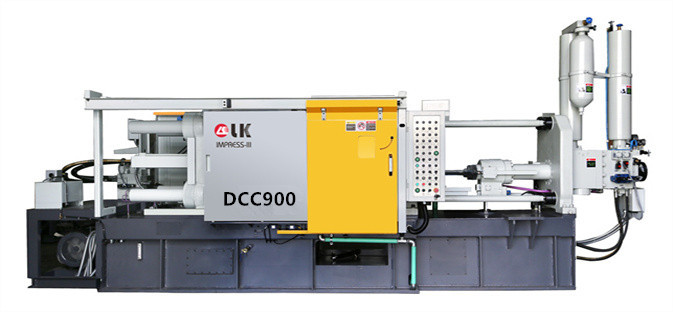Establishing an Optimal Casting Condition Management Model for Small and Medium-Sized Die-Casting Ma
LK Die Casting Machine / 2024-07-05 16:08:10
Introduction
Small and medium-sized die-casting manufacturers face many challenges in improving production efficiency and product quality.
Using machine learning technology to establish an optimal casting condition management model can help manufacturers optimize the production process, reduce defects, and improve product quality.
This article will introduce how to establish this model so that small and medium-sized die-casting manufacturers can quickly master relevant knowledge and apply it to actual production.

1. What is machine learning
Machine learning is a technology that uses algorithms and statistical models to automatically identify patterns in data and make predictions and decisions through a data-driven approach.
Its application in manufacturing can effectively analyze and optimize complex production processes.
Basic types of machine learning
Supervised learning: training through labeled data to predict output results.
Unsupervised learning: using unlabeled data to find patterns and structures in data.
Reinforcement learning: continuously optimizing decision-making strategies through interaction with the environment.
2. Complexity of the die-casting process
The die-casting process involves multiple variables, such as temperature, pressure, speed, and cooling time. These variables affect each other, making it complex
and difficult to optimize production conditions.
Traditional experience and trial and error methods are inefficient and cannot cope with the high requirements of modern manufacturing for precision and efficiency.
3. Advantages of management models based on machine learning
Data-driven: Automatically identify and optimize optimal production conditions by analyzing large amounts of production data.
Real-time monitoring: Real-time monitoring of the production process, timely adjustment of parameters, and improved production efficiency.
Predictive analysis: Predict potential problems, take measures in advance, and reduce production defects.
Self-optimization: The model can continuously learn and improve, improving the adaptability and flexibility of the production process.
4. Steps to establish an optimal casting condition management model
Step 1: Data collection
Data is the basis of machine learning models, and comprehensive and accurate production data needs to be collected, including but not limited to the following:
Temperature data: mold temperature, molten metal temperature, etc.
Pressure data: injection pressure, clamping pressure, etc.
Time data: injection time, cooling time, mold opening time, etc.
Quality data: product size, surface quality, defect type, and quantity, etc.
Step 2: Data preprocessing
Data preprocessing is a key step to ensure data quality and model accuracy, including data cleaning, data standardization, and feature engineering, etc.
Data cleaning: remove missing values, outliers, and duplicate data.
Data standardization: convert data to the same dimension for easy model processing.
Feature engineering: extract and select important feature variables to enhance the model's predictive ability.
Step 3: Model selection and training
According to the data type and task requirements, select the appropriate machine learning algorithm. Commonly used algorithms include:
Regression algorithm: used to predict continuous variables, such as linear regression, decision tree regression, etc.
Classification algorithm: used to predict discrete variables, such as logistic regression, support vector machine, etc.
Clustering algorithm: used to discover patterns and structures in data, such as K-means clustering, hierarchical clustering, etc.
Divide the data into training sets and test sets, use the training set to train the model, and use the test set to evaluate the model performance, adjust
parameters, and optimize the model.
Step 4: Model deployment and application
Deploy the trained model to the actual production environment, monitor the production process in real time, automatically adjust the production parameters, and
achieve the management of optimal casting conditions.
Real-time data collection: Through sensors and Internet of Things technology, real-time production data is collected and input into the model for prediction and
decision-making.
Automatic control system: Feedback the optimal production parameters output by the model to the production equipment and automatically adjust the production process.
Visual monitoring platform: Establish a visual monitoring platform to display the production status and prediction results in real-time, which is convenient for
operators to manage and optimize production.

5. Case analysis
Through actual case analysis, the application effect of the management model based on machine learning in small and medium-sized die-casting manufacturers is
demonstrated.
Case 1: Improve production efficiency
A small and medium-sized die-casting manufacturer optimized production parameters and improved production efficiency by establishing a machine-learning management
model.
The model found the best combination of injection speed and cooling time by analyzing historical production data, which shortened the production cycle by 20%.
Case 2: Reduce production defects
Another manufacturer applied a machine learning model to predict and reduce defects in production. The model monitored the mold temperature and injection pressure
in real-time, adjusted the parameters in time, reduced pores and cracks in the product, and reduced the defect rate by 30%.
6. Future prospects
With the continuous development of machine learning technology, its application in the manufacturing industry will become more and more extensive and in-depth.
In the future, management models based on machine learning will be more intelligent and adaptive, bringing more optimization and innovation opportunities to small
and medium-sized die-casting manufacturers.
Intelligent production
Through deep learning and reinforcement learning technology, the production process can be fully automated and intelligent, further improving production efficiency
and product quality.
Adaptive model
Develop a machine learning model with adaptive capabilities, which can automatically adjust and optimize production parameters according to changes in production
environment and demand, and adapt to different production conditions.
Big data analysis
Use big data technology to integrate more production data, conduct deeper analysis and mining, discover potential optimization opportunities and problems, and
further improve production management.
Conclusion
Establishing an optimal casting condition management model for small and medium-sized die-casting manufacturers based on machine learning can significantly improve
production efficiency, reduce production defects, and improve product quality.
This goal can be effectively achieved through steps such as data collection, data preprocessing, model selection and training, model deployment and application.
In the future, with the development of intelligent production, adaptive models, and big data analysis technology, management models based on machine learning will
bring more innovations and breakthroughs to small and medium-sized die-casting manufacturers.
Contact LK Egypt to learn more info about the die-casting machine
LKAGENT OFFICE DCM
Address: Industry Zone, South of Port Said Kebly, Egypt
https://www.zazdiecasting.com/
Phone: +86 13598704163
Mobile: +20 101 304 3317 +20 150 181 8310
Email: jack@zazmae.com ahmedmahmoud@zazmae.com
#die cast tooling
#trivalent chromate
#rapid prototype casting
#a360 aluminum
#aluminum caster
#aluminum prototype
#ideal 55 slider parts
#density of aluminum kg/mm3
#magnesium sheet metal
#parts of a metal gate
#subcontracting of screw machining for the luxury sector
#wall aluminum
#die casting tooling
#tooling for die casting
#density of aluminium in kg mm3
#clear chromate
#es casting metals
#gating material
#prototype aluminum
#sigma castings
#subcontracting of screw-machining for household appliances
#we squeeze to please machine
#aluminium gravity die casting
#aluminum part
#aluminum rapid prototyping
#nickel casting
#plunger tip for die casting machine
#rapid prototyping aluminium
OTHER CONTENT
-

2024-09-19 14:16:15 LK Cold Chamber Die Casting Machine DCC900 Locking Force: 9000KN Die Height: 400-1000mm Space Between Tie Bars: 930x930mm Shot Weight: 13.5Kg Casting Area Max:2250c㎡
More -

2024-09-19 14:11:06 LK Cold Chamber Die Casting Machine DCC280 Locking Force: 2800KN Die Height: 250-650mm Space Between Tie Bars: 560x560mm Shot Weight: 2.9Kg Casting Area Max:700c㎡
More -

2024-09-19 10:23:07 LK Cold Chamber Die Casting Machine DCC580 Locking Force: 5000KN Die Heigh: 350-850mm Space Between Tie Bars: 760x760mm Shot Weight: 6.9Kg Casting Area Max:1250c㎡
More -

2024-09-19 10:11:20 LK Cold Chamber Die Casting Machine DCC400 Locking Force: 4000KN Die Height: 300-700mm Space Between Tie Bars: 669x669mm Shot Weight: 4.7Kg Casting Area Max:1000c㎡
More

